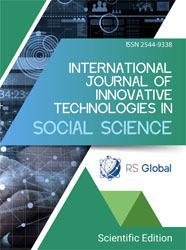GLOBAL ASPECTS OF MICRO- AND MACRO-DEGREE MANAGEMENT INSTALLATION
Abstract
This paper aims to explore the global aspects of micro- and macro-degree management installation in response to the increasing complexity of modern organizations and the necessity for effective decision-making at different levels. The study investigates various factors, challenges, and strategies related to implementing degree management practices in different organizational contexts. Case studies from diverse industries and global companies are examined to provide a comprehensive understanding of global degree management installation. The findings emphasize the significance of aligning micro and macro aspects of degree management to achieve organizational success in an evolving global environment. By delving into the nuances of degree management installation globally, this manuscript contributes to a deeper understanding of how organizations can effectively manage degrees at both microscopic and macroscopic levels, thereby enhancing decisionmaking and overall organizational performance.
References
Drucker, P. (1954). The Practice of Management. New York, NY: Harper & Row. 368 pages
Porter, M. E. (1980). Competitive Strategy. New York, NY: Free Press. 396 pages
Deming, W. E. (1982). Out of the Crisis. Cambridge, MA: MIT Press. 507 pages
Follett, M. P. (1918). The New State: Group Organization the Solution of Popular Government. New York, NY: Longmans, Green, and Co. 254 pages
Mintzberg, H. (1973). The Nature of Managerial Work. New York, NY: Harper & Row. 380 pages
Schein, E. H. (1985). Organizational Culture and Leadership. San Francisco, CA: Josey-Bass. 418 pages
Senge, P. M. (1990). The Fifth Discipline. New York, NY: Doubleday/Currency. 445 pages
Views:
40
Downloads:
48
Copyright (c) 2024 Iqboljon Odashev Mashrabjonovich

This work is licensed under a Creative Commons Attribution 4.0 International License.
All articles are published in open-access and licensed under a Creative Commons Attribution 4.0 International License (CC BY 4.0). Hence, authors retain copyright to the content of the articles.
CC BY 4.0 License allows content to be copied, adapted, displayed, distributed, re-published or otherwise re-used for any purpose including for adaptation and commercial use provided the content is attributed.















